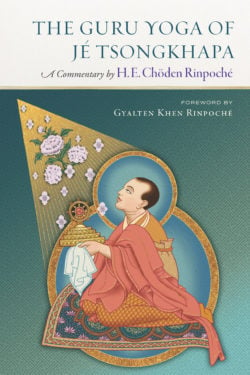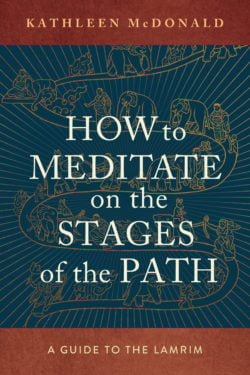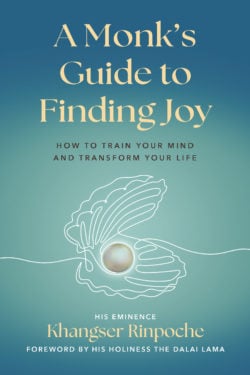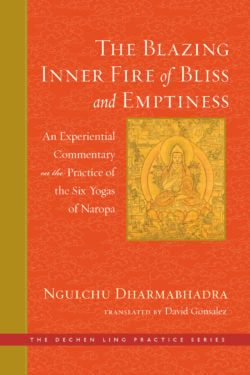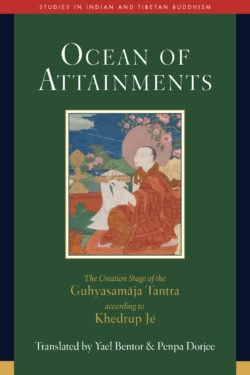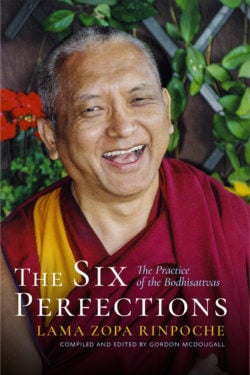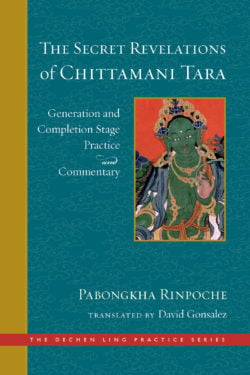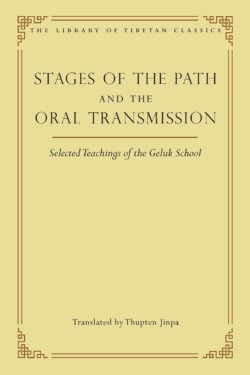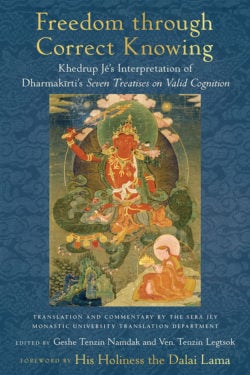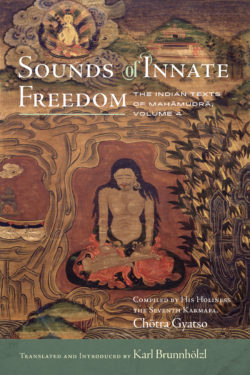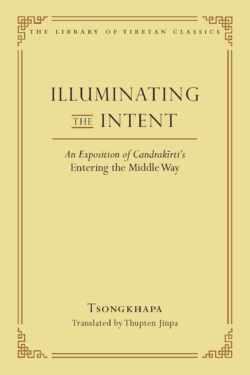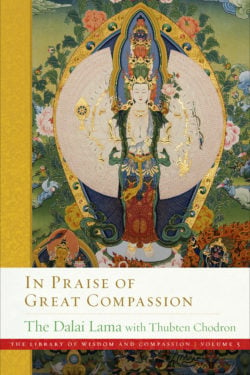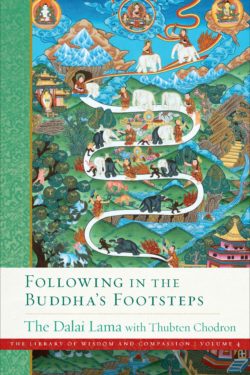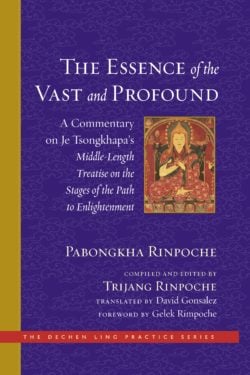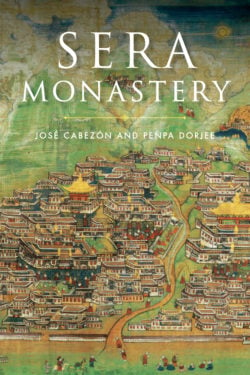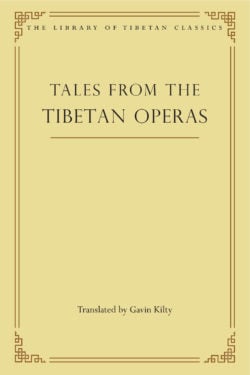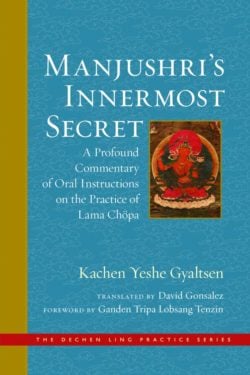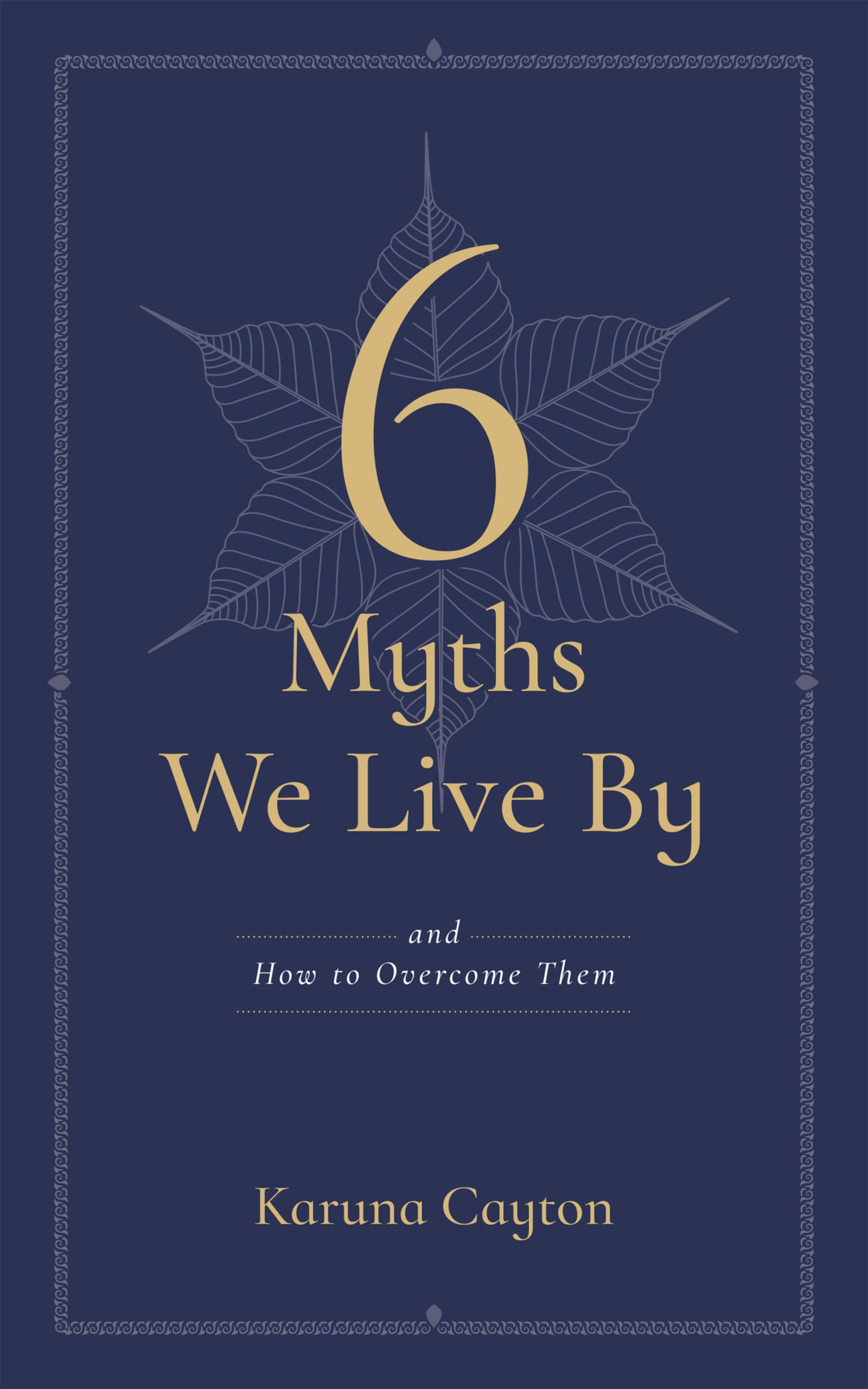
6 MYTHS WE LIVE BY
Buddhist wisdom for everyday problems rooted in Buddhist psychology and meditation, 6 Myths We Live By shows us how to uncover our misperceptions and leads us on a path to self-development.
The truth is you probably believe all sorts of myths, but you don’t even know it. To escape any hardship, any suffering or discomfort, we all believe myths about how the world works and how we live in that world. In 6 Myths We Live By, therapist and long-time Buddhist practitioner Karuna Cayton guides us through six common myths that may give us comfort, but actually only perpetuate our problems:
the myth of reality,
the myth of identity,
the myth of permanence,
the myth of randomness,
the myth of happiness, and
the myth of only living once.
Cayton takes us through each of these myths using real-world examples and draws upon Buddhist principles, psychology, and meditation practices to show how we can wake up to reality. By planting a seed of doubt about the beliefs that we’ve always thought were true, we can open our eyes and deepen our relationship with the way we see our life, our potential, and the nature of our struggles and achievements.
- Paperback
- 200 pages, 5 x 8 inches
- $19.95
- ISBN 9781614298762
- eBook
- 200 pages
- $14.99
- ISBN 9781614298847
“Karuna tells us in his down-to-earth way what Buddha has found from his own direct experience—not from revelation, not from on high, nothing mysterious: that we’re not in touch in reality and that this is why we suffer. And he shows us that it’s not a question of believing what Buddha says but instead learning to look freshly at his findings and prove them for ourselves, one step at a time.”—Robina Courtin, Buddhist nun
“In 6 Myths We Live By, Karuna Cayton calls upon both the inspiration he received from the extraordinary Lamas he lived with in Nepal and his more-than-thirty years of practical experience as a psychotherapist in the West, producing something our conflicted environment truly needs. His breadth of learning and depth of experience enable him to assist his readers in identifying and then cutting through the fundamentally mistaken notions—the so-called "six myths"—responsible for the range of problems and conflicts so evident in our fractured world today. And because Cayton also possesses the admirable ability to share his insights in a warmly conversational style with clarity, sympathy and humor, this work—for all its psychological profundity—never lacks the true human touch. I strongly recommend it.”—Jonathan Landaw, compiler and editor of Lama Yeshe's Introduction to Tantra
Discover More
Sit
A popular Buddhist teacher guides you through strategies to build and maintain a rock-solid daily meditation practice—from setting reminders to dealing with setbacks to introducing the philosophical concepts underpinning Buddhist meditation—and everything in between.
It’s widely known that there are many benefits to meditation, particularly if undertaken regularly, but making it a daily habit can be a challenge for many people. Why? Because it takes more than willpower.
Here, longtime meditation teacher and Buddhist blogger Bodhipaksa presents a collection of strategies and tools to help build a rock-solid daily meditation practice into your life. The book is divided into twenty-eight chapters, one for each day.
Each chapter starts with a Practice Reminder, just a few words reminding readers of the importance of practicing meditation rather than merely reading about it. There’s also a link to a web page of guided meditations.
Following that is a Today section, a brief summary of the day’s reading.
Then there’s a Strategies section, which offers suggestions to help readers build the habit of meditating daily. Strategies can be as simple as setting reminders or using a meditation timer, or more involved tools such as changing any belief that you lack what it takes to meditate daily.
That’s followed by a Going Deeper section, with a deeper exploration of some of the Buddhist teachings underpinning our practice, often referring to the suttas, or scriptures, of early Buddhism.
Next is a Reflection section, which encourages readers to keep a journal to make the content of the Going Deeper section more experiential.
Each chapter ends with a Last Words section, quickly summarizing the Going Deeper section.
To help you get started, Bodhpaksa has recorded eighteen meditations for you to listen to and provided a 28-day calendar to help track your deepening meditation habit. Simply scan the QR code in the book for access.
The Guru Yoga of Jé Tsongkhapa
Explore the guru yoga practice of Jé Tsongkhapa with a legendary meditation master.
The Hundreds of Deities of Tuṣita is an inspiring and well-loved guru yoga practice that originated from Jé Tsongkhapa himself and was disseminated by the First Dalai Lama. In this book, Chöden Rinpoché—a celebrated scholar who was chosen as a debate partner for His Holiness the Dalai Lama, as well as an accomplished yogi who spent nineteen years in solitary retreat—offers two different commentaries to guide the reader’s understanding.
Rinpoché’s first commentary is based on the tantric oral tradition as presented by the great lama and scholar Pabongkha Dechen Nyingpo in his own inspired commentary on The Hundreds of Deities of Tuṣita, called A Treasury of Precious Jewels, which is presented here in full. Rinpoché adds clarifying instruction to Jé Pabongkha’s work, bringing out the deeper meaning of the text and revealing how ordinary practitioners may understand and apply Pabongkha’s instruction. The second commentary from Rinpoché is a condensed commentary based on the sūtra tradition. Thus, the reader is treated to two different perspectives of the guru yoga practice of Jé Tsongkhapa.
Previously published as Opening the Door of Blessings, this edition has been revised and updated, and is an essential edition to any practitioner’s library.
How to Meditate on the Stages of the Path
Deepen your meditation by diving into the practices of the lamrim—the stages of the path to enlightenment.
Buddhist tradition tells us that enlightenment is possible for each and every one of us. It’s actually the best thing we can do for others and for the world, but also the best thing we can do for ourselves, because it means being free from all misery, pain, depression, dissatisfaction, and negative emotions, and abiding forever in peace, joy, love, and compassion. What could be more wonderful than that?
Kathleen McDonald (Sangye Khadro), a Western nun with decades of experience and author of the bestselling book How to Meditate, guides us through the next step in our meditation practice: the transformative meditations on the Tibetan lamrim stages to enlightenment. She helps us see that the whole purpose of meditation is to transform our mind in a constructive way. For this to happen, we need to become so thoroughly familiar with the lamrim topics that they become our natural way of thinking and living our life. This warm and encouraging guide takes us through meditations on these lamrim topics, such as:
- impermanence
- refuge
- karma
- the four noble truths
- bodhichitta
- the six perfections: giving, ethics, patience, joyous effort, concentration, and wisdom
How to Meditate on the Stages of the Path offers practical advice, support, and step-by-step guidance on how to meditate on the stages of the path to enlightenment that will transform the practice of new meditators and seasoned practitioners alike.
A Monk’s Guide to Finding Joy
A profound and practical guide to uncovering your own wise mind and kind heart.
We all want to find happiness. But how do we go about it? In this easygoing and clear-sighted guide, celebrated Buddhist meditation and philosophy master His Eminence Khangser Rinpoche provides us with down-to-earth advice on how to train our minds and find our own innate wisdom and kindness along the way. He helps us see the profound insight that is open to us all, and how it can awaken us to the truth of the way things are. This insight into the truth, and the practices that help you cultivate this awareness, transform suffering into wisdom and compassion—and ultimately joy.
A Monk’s Guide to Finding Joy brings the ancient Tibetan mind-training tradition into our twenty-first-century lives. Through stories, real-life examples, reflections, and meditation practices—all told with warmth and humor—H.E. Khangser Rinpoche shows us how we can transform the suffering of our life into happiness. When we train the mind from within the context of our difficult emotions, we can find true joy, just as the oyster transforms sand into a pearl.
The Blazing Inner Fire of Bliss and Emptiness
The Blazing Inner Fire of Bliss and Emptiness presents lucid translations of a pair of detailed commentaries by the famed Tibetan tantric master Ngulchu Dharmabhadra (1772–1851), illuminating a set of extremely secret and restricted tantric practices of highest yoga tantra.
The first of these commentaries details the practices of the Six Yogas of Naropa, one of the most celebrated and revered systems of completion-stage practice in Tibet. Dharmabhadra presents the Six Yogas by elaborating upon Lama Tsongkhapa ’s (1357–1419) masterpiece on the subject entitled Endowed with the Three Inspirations, which served as the basis for nearly all subsequent commentaries on the Six Yogas within the Gelug tradition. Ngulchu Dharmabhadra’s commentary is unique in that it presents the Six Yogas within the context of Vajrayogini practice, making this book a perfect companion piece to The Extremely Secret Dakini of Naropa (Wisdom Publications, 2020).
Also contained in this book is Ngulchu Dharmabhadra’s lucid and concise commentary on the First Panchen Lama’s (1570–1662) famous Supplication for Liberation from [Fear of] the Perilous Journey of the Intermediate State. The prayer—a beautiful literary contribution from the First Panchen Lama in its own right—invokes the immediacy of death and the potential to use the process of dying as an opportunity for liberation. The prayer extols the efficacy of the “nine mixings” of the completion stage as direct means of transforming our ordinary death process by using advanced yogas presented in the first commentary on the Six Yogas.
Together, these works present the reader with a vast and profound vision of spiritual transformation—one in which every aspect of human experience can be used as an opportunity for transcendence and spiritual liberation.
The Dechen Ling Practice Series from Wisdom Publications is committed to furthering the vision of David Gonsalez (Venerable Losang Tsering) and the Dechen Ling Press of bringing the sacred literature of Tibet to the West by making available many never-before-translated texts.
Ocean of Attainments
This commentary on Guhyasamāja tantra is the seminal guide to deity yoga and tantric visualization for the Geluk school of Tibetan Buddhism.
The Guhyasamāja Tantra, called the king of all tantras, is revered in Tibet, especially by the Geluk school. Ocean of Attainments, a commentary on Guhyasamāja practice, was composed by Khedrup Jé Gelek Palsang (1385–1438), a key disciple of the Geluk school founder, Tsongkhapa Losang Drakpa. It explores the creation stage, a quintessential Buddhist tantric meditation that together with the completion stage comprises the path of unexcelled tantra.
In the creation stage, meditators visualize themselves as buddhas at the center of the celestial maṇḍala, surrounded in all directions by male and female buddhas, bodhisattvas, and other enlightened beings. Yet creation-stage practice is not merely visualization but deity yoga—indivisibly uniting the meditation on emptiness with the visualization of the maṇḍala. The creation stage uses the conceptualization in visualization to overcome conceptualization, thereby creating a nonconceptual and nonerroneous direct perception. Such a mind, profound and vast, can bring about a transformation that stops saṃsāric suffering. How can visions generated as mental constructs not be erroneous? To the awakened eye, the buddhas and other beings who dwell in the maṇḍala are “reality,” and in a sense they are more than real.
While the previously published Essence of the Ocean of Attainments is a concise exposition on the practice of the Guhyasamaja sadhana, Ocean of Attainments is far more detailed, providing extensive scriptural citations, clear explanation of the body maṇḍala, arguments on points of contention, reference to other tantric systems, and critiques of misinterpretations. With its extensive and clear introduction, this volume is a vital contribution to the growing body of scholarship on Guhyasamāja and on Buddhist tantra in general.
Learn more about the Studies in Indian and Tibetan Buddhism series.
The Six Perfections
The six perfections are the actions of the bodhisattvas—holy beings who have transcended selfless concerns. But they’re also skills we can and should develop right now, in our messy, ordinary lives.
In this clear, comprehensive guide to the backbone of Mahayana Buddhist practice, Lama Zopa Rinpoche walks us through each of the six perfections:
- charity
- morality
- patience
- perseverance
- concentration
- wisdom
As he carefully describes each perfection, he not only reveals the depth of its meaning and how it intertwines with each other perfection, but he also explains how to practice it fully in our everyday lives—offering concrete ways for us to be more generous, more patient, more wise. With the guidance he gives us, we can progress in our practice of the perfections until we, like the bodhisattvas, learn to cherish others above ourselves.
“The perfections are the practices of bodhisattvas, holy beings who have completely renounced the self; they have transcended selfish concerns and cherish only others. Each perfection is perfect, flawless. Each arises from bodhichitta and is supported by the other perfections, including the wisdom of emptiness. Because of that, a bodhisattva generates infinite merit every moment, whether outwardly engaged in working for others or not. A bodhisattva’s bodhichitta never stops.”
—Lama Zopa Rinpoche
The Secret Revelations of Chittamani Tara
Chittamani Tara is the Highest Yoga Tantra aspect of Green Tara, one of the most popular yidams in Tibetan Buddhism. In The Secret Revelations of Chittamani Tara: Generation and Completion Stage Practice and Commentary, beloved teacher Pabongkha Rinpoche shares the teachings that his teacher, Gargyi Wangpo Takphu Dorje Chang, received directly from Chittamani Tara herself.
The Secret Revelations of Chittamani Tara contains many profound oral instructions that are not easily found elsewhere, including one of the most powerful and practical discourses on the completion stage to be found anywhere in English translation. Rinpoche has supplemented his commentary with teachings from the Gaden Hearing Lineage as well as the general tantric teachings of the Gelug tradition. Also included are the Chittamani Tara self-generation sadhana, the ganachakra offering for Chittamani Tara, and three beautiful and moving praises and prayers to Tara composed by masters in the tradition.
Lovingly translated by the scholar-monk David Gonsalez, The Secret Revelations of Chittamani Tara is a guiding force leading all living beings to the state of Arya Tara.
The Dechen Ling Practice Series from Wisdom Publications is committed to furthering the vision of David Gonsalez (Venerable Losang Tsering) and the Dechen Ling Press of bringing the sacred literature of Tibet to the West by making available many never-before-translated texts.
Stages of the Path and the Oral Transmission
A major contribution to the literature on Buddhist practice according to the Geluk school of Tibetan Buddhism from its foremost interpreter.
Although it was the last major school to emerge in the Tibetan Buddhist tradition, the Geluk school has left an indelible mark on Buddhist thought and practice. The intellectual and spiritual brilliance of its founder, the great Tsongkhapa (1357–1419), has inspired generations of scholars and tantric yogis to place him at the heart of their daily meditative practice. The Geluk tradition’s close ties to the Dalai Lamas have also afforded it an outsized influence in all aspects of Tibetan life for centuries. At its peak, its combined monasteries boasted a population in the tens of thousands, and its sway encompassed the religious landscape of Mongolia and much of Central Asia.
This widespread religious activity fostered a rich literary tradition, and fifteen seminal works are featured here representing four genres of that tradition. The first are works on the stages of the path, or lamrim, the genre for which the Geluk is most renowned. Second are works on guru yoga, centered around the core Geluk ritual Offering to the Guru (Lama Chöpa). Third are teachings from the unique oral transmission of Geluk mahāmudrā, meditation on the nature of mind. Fourth are the “guide to the view” (tatri) instructions. The volume features well-known authors like Tsongkhapa, the First Panchen Lama, and the Fifth Dalai Lama, but also important works from lesser-known figures like Gomchen Ngawang Drakpa’s stages of the path in verse and Gyalrong Tsultrim Nyima’s extensive commentary on the Lama Chöpa that interweaves precious explanations from the Ensa Oral Tradition he received from his own teacher.
Your guide to these riches, Thupten Jinpa, maps out their historical context and spiritual significance in his extensive introduction.
Learn more about the Library of Tibetan Classics
Learn about becoming a benefactor of the Library of Tibetan Classics
Freedom through Correct Knowing
Discover a clear and accessible translation with commentary on key parts of Khedrup Jé’s Clearing Mental Darkness.
Composed at the request of His Holiness the Dalai Lama, and with a foreword by His Holiness, this translation with commentary on key parts of Khedrup Jé’s Clearing Mental Darkness: An Ornament of Dharmakirti’s “Seven Treatises on Valid Cognition” is intended for all levels of understanding. You’ll learn how a mind realizes its object, which types of consciousness realize their objects, and when a consciousness is considered to be valid in the sense of realizing its object. Having explained valid cognizers, or direct perceivers, which are essential to understanding the four noble truths, Khedrup Jé goes on to brilliantly elucidate this essential teaching of the Buddha and offers a lucid presentation of how to progress on the spiritual paths of liberation and enlightenment, including how to generate yogic perception directly realizing selflessness. With this, one develops an unmistaken realization of the fundamental reality of selflessness of persons and phenomena, which eliminates ignorance, the root cause of all mental afflictions and samsaric suffering.
Sounds of Innate Freedom, Vol. 4
Sounds of Innate Freedom: The Indian Texts of Mahāmudrā are historic volumes containing many of the first English translations of classic mahamudra literature. The texts and songs in these volumes constitute the large compendium called The Indian Texts of the Mahāmudrā of Definitive Meaning, compiled by the Seventh Karmapa, Chötra Gyatso (1456–1539). The collection offers a brilliant window into the richness of the vast ocean of Indian mahamudra texts cherished in all Tibetan lineages, particularly in the Kagyü tradition, giving us a clear view of the sources of one of the world’s great contemplative traditions.
Besides the individual dohās (couplets), vajragītis (vajra songs), and caryāgītis (conduct songs) in this second volume in publication, the three extensive commentaries it contains brilliantly unravel enigmas and bring clarity not only to the specific songs they comment on but to many other, often cryptic, songs of realization in this collection. These expressive songs of the inexpressible offer readers a feast of profound and powerful pith instructions uttered by numerous male and female mahāsiddhas, yogis, and ḍākinīs, often in the context of ritual gaṇacakras and initially kept in their secret treasury. Displaying a vast range of themes, styles, and metaphors, they all point to the single true nature of the mind—mahāmudrā—in inspiring ways and from different angles, using a dazzling array of skillful means to penetrate the sole vital point of buddhahood being found nowhere but within our own mind. Reading and singing these songs of mystical wonder, bliss, and ecstatic freedom, and contemplating their meaning, will open doors to spiritual experience for us today just as it has for countless practitioners in the past.
Click here to explore other volumes available in The Sounds of Innate Freedom series.
Illuminating the Intent
This work is perhaps the most influential explanation of Candrakirti’s seventh-century classic Entering the Middle Way (Madhyamakavatara).
Written as a supplement to Nagarjuna’s Fundamental Verses on the Middle Way, Candrakirti’s text integrates the central insight of Nagarjuna’s thought—the rejection of any metaphysical notion of intrinsic existence—with the well-known Mahayana framework of the ten levels of the bodhisattva, and it became the most studied presentation of Madhyamaka thought in Tibet.
Completed the year before the author’s death, Tsongkhapa’s exposition of Candrakirti’s text is recognized by the Tibetan tradition as the final standpoint of Tsongkhapa on many philosophical questions, particularly the clear distinctions it draws between the standpoints of the Madhyamaka and Cittamatra schools.
Written in exemplary Tibetan, Tsongkhapa’s work presents a wonderful marriage of rigorous Madhyamaka philosophical analysis with a detailed and subtle account of the progressively advancing mental states and spiritual maturity realized by sincere Madhyamaka practitioners.
The work remains the principal textbook for the study of Indian Madhyamaka philosophy in many Tibetan monastic colleges, and it is a principal source for many Tibetan teachers seeking to convey the intricacies of Madhyamaka philosophy to non-Tibetan audiences.
Though it is often cited and well known, this is the first full translation of this key work in a Western language.
Learn more about the Library of Tibetan Classics
Learn about becoming a benefactor of the Library of Tibetan Classics
In Praise of Great Compassion
In Praise of Great Compassion, the fifth volume of the Library of Wisdom and Compassion, continues the Dalai Lama’s teachings on the path to awakening. While previous volumes focused on our present situation and taking responsibility for creating the causes of happiness, this volume concerns opening our hearts and generating the intention to make our lives meaningful by benefiting others.
We are embedded in a universe with other living beings, all of whom have been kind to us in one way or another. More than any other time in human history, we depend on one another to stay alive and flourish. When we look closely, it becomes apparent that we have been the recipient of great kindness. Wanting to repay others’ kindness, we cultivate a positive attitude by contemplating the four immeasurables of love, compassion, empathic joy, and equanimity, and the altruistic intention of bodhicitta. We learn to challenge the self-centered attitude that leads to misery and replace it with a more realistic perspective enabling us to remain emotionally balanced in good and bad times. In this way, all circumstances become favorable to the path to awakening.
Learn more about the Library of Wisdom and Compassion series.
Following in the Buddha’s Footsteps
Delve into the substance of spiritual practice in this fourth volume of the Dalai Lama’s definitive series on the path to awakening, Following in the Buddha’s Footsteps. You’ll first hear His Holiness’s explanation of the Buddha, Dharma, and Sangha, why they are reliable guides on the path, and how to relate to them. His Holiness then describes the three essential trainings common to all Buddhist traditions: the higher trainings in ethical conduct, concentration, and wisdom. These chapters show us how to live a life free of harm to self or others and give us detailed instructions on how to develop single-pointed concentration as well as the higher states of concentration available to an earnest practitioner. In addition, the chapters on wisdom contain in-depth teachings on the noble eightfold path and the four establishments of mindfulness for developing greater awareness and understanding of our body, feelings, mind, and other phenomena. Together, these topics form the core of Buddhist practice.
This is a book to treasure and refer to repeatedly as you begin the path, progress on it, and near the final goal of nirvāṇa.
Learn more about the Library of Wisdom and Compassion series.
The Essence of the Vast and Profound
The Essence of the Vast and Profound will soon find its place as one of the greatest lamrim commentaries ever given.
Drawn from teachings by Pabongkha Rinpoche, which were given over the course of thirty-six days in 1934 in Tibet’s capital city of Lhasa, The Essence of the Vast and Profound masterfully weaves together Tsongkhapa’s Middle-Length Treatise on the Stages of the Path to Enlightenment, the Second Panchen Lama’s Swift Path, and the Third Dalai Lama’s Essence of Refined Gold. Rinpoche offers wise and compassionate guidance on such crucial subjects as how to rely on a spiritual teacher, how to develop certainty on the path, what it means to take refuge, how to understand karma, and the importance of compassion—explaining the entire spectrum of the Buddhist path, and also inspiring the reader to follow it.
The Dechen Ling Practice Series from Wisdom Publications is committed to furthering the vision of David Gonsalez (Venerable Losang Tsering) and the Dechen Ling Press of bringing the sacred literature of Tibet to the West by making available many never-before-translated texts.
Sera Monastery
The definitive history of Sera Monastery, one of the great monastic universities of Tibet, from its founding to the present.
Founded in 1419, Sera Monastery was one of the three densas, the great seats of learning of the Geluk school of Tibetan Buddhism. With over 9,000 monks in residence in 1959, it was the second largest monastery in the world. Throughout its history, Sera has produced some of Tibet’s most important saints, scholars, and political leaders.
The scholars José Cabezón and Penpa Dorjee begin Sera Monastery with the history of monasticism from the time of the Buddha through its early development in Tibet and then tell the 600-year story of Sera from its founding to the present. They recount how the monastery grew and evolved during the centuries, how it has fared under Chinese rule, and how it was transplanted in the Tibetan refugee camps of South India. We are introduced to some of Sera’s most important lamas and hermits, as well as its curriculum, yearly calendar, the daily life of scholar monks, and the role Sera monks played in the political history of Tibet.
Former Sera monks themselves, Cabezón and Dorjee demonstrate their firsthand knowledge of the monastery, its traditions, and daily life on every page. Scrupulously researched over decades, Sera Monastery is the most comprehensive history of a Tibetan monastery ever written in a Western language.
Tales from the Tibetan Operas
In Tales from the Tibetan Operas, timeless Buddhist ideas are brought to life through enchanting myths and vivid stories. Poetically vibrant, these eight classic lhamo stories have continued to delight and edify Tibetan audiences of all backgrounds, from village children to learned scholar-monks and Dalai Lamas.
Western readers can now get a glimpse into ancient Indian and Tibetan mythology through the cultural touchstone of eight classic lhamo stories. On visual display are the human and nonhuman characters of history and folklore — kings, queens, conniving ministers, ordinary folk, yogis, monks, and powerful beings from other realms such as gods and nāgas — engaged in plotting, kidnapping, fighting, journeys to faraway lands, separation, and reconciliation, often with a quest for seemingly impossible treasure. The suspenseful tales have many dramatic plot twists, but they all end in happiness, where the good achieve their goals and the bad receive their just desserts. The operas thus bring to the people the fundamental ethical laws of behavior and teachings of natural justice based on Buddhist doctrine.
The book features more than 50 gorgeous photos of the operas performed on location in Tibet and India.
Learn more about the Library of Tibetan Classics
Learn about becoming a benefactor of the Library of Tibetan Classics
Manjushri’s Innermost Secret
Highly informative and deeply moving, Manjushri’s Innermost Secret contains the entire path to enlightenment that was transmitted in direct communication with Lama Tsongkhapa by the wisdom-buddha Manjushri. This invaluable commentary provides an authoritative illumination of the Lama Chöpa ritual text for practitioners and is widely revered and commented upon in its own right.
Designed for those who have received the highest yoga tantra empowerment, these texts swiftly guide the spiritual practitioner to the state of complete enlightenment through the full spectrum of teachings on the lamrim and mind training (lojong). It also covers the generation and completion stages of highest yoga tantra, all of which are grounded in deep, heartfelt faith and devotion for one’s spiritual guide.
In addition to the Lama Chöpa ritual text itself, this book also includes the First Panchen Lama’s root text on Ganden Mahamudra, the supplication verses to the lineage gurus, and the Fifty Verses of Guru Devotion composed by the Indian saint Ashvagosha.
The Dechen Ling Practice Series from Wisdom Publications is committed to furthering the vision of David Gonsalez (Venerable Losang Tsering) and the Dechen Ling Press of bringing the sacred literature of Tibet to the West by making available many never-before-translated texts.



